Visit Naranag To Explore Kashmir’s Hidden Gem Of Ancient Ruins And Natural Beauty In 2026
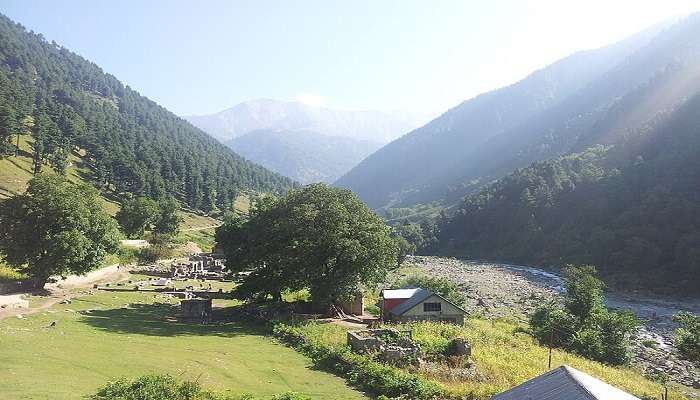
Ancient stone temple ruins of Naranag with lush green Himalayan mountains in the backdrop. Located in the lap of the Himalayas, Naranag serves as a testimony to the rich history and natural beauty of Kashmir. This tiny village from the Ganderbal district of Jammu and Kashmir serves just the kind of getaway needed to taste the classy blend of ancient architecture, spiritual importance, and exquisite landscapes. Famed for a cluster of ancient temple ruins dating back to the 8th century, Naranag is also known to be the base camp for high-altitude Gangabal Lake and the meadows of Vishansar. The vale is of archaeological importance and is the base camp for trekkers and nature lovers.
History Of Naranag
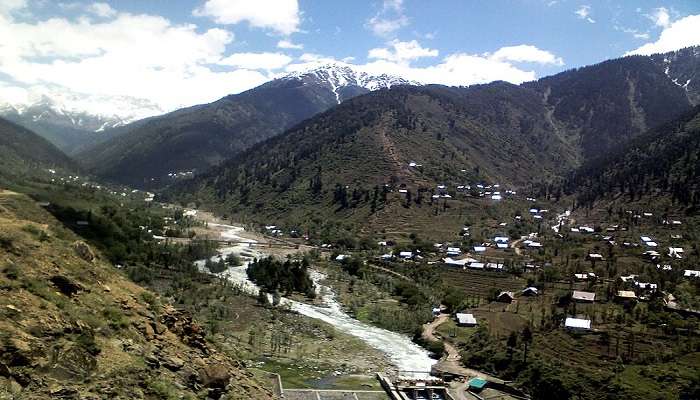
The history of Naranag goes deep into ancient Hindu mythology and the times of prime glory of Kashmir Shaivism. It is said that the construction of these temples dates back to the 8th century CE by King Lalitaditya Muktapida of the Karkota Dynasty, and they were dedicated to Lord Shiva. It was part of a much greater complex which housed an all-inclusive centre of Shaivite worship in an unspoiled mediaeval period.
According to Kalhana’s Rajatarangini, this place dates back to the 12th-century historical record of Kashmir. Naranag also saw the rise and fall of various dynasties during the ages of Mughal and Dogra rule. These ruins stand like sentinels, mute witnesses to ancient Kashmir’s artistic and architectural genius. They have been the fury of the elements and assaulted by time. Today, Naranag is an important archaeological site and has become a living testimony to Kashmir’s rich cultural heritage.
Also Read: Things To Do In Kashmir
Architectural Marvel Of Naranag
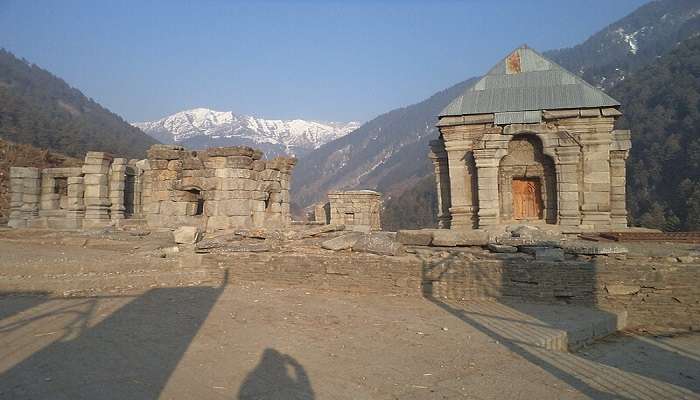
The temple complex of Naranag is one of the marvellous examples of ancient Kashmir architecture, revealing the mature stone masonry skills of the 8th century. The centre shrine has Lord Shiva enshrined and possesses the typical conical roof of Kashmir’s temple architecture. This large complex consists of small shrines and other massive structures without mortar, built of grey limestone blocks. These temples are profusely ornamented and filled with carving and sculpture; they embody numerous images of Hindu deities and scenes of myths.
One of the most striking features is that it manifests Greek and Roman architectural influences in the Corinthian capitals and trefoil arches. This unique blend of indigenous and foreign architectural elements enables Naranag to evoke interest among archaeologists and art historians. Even in their ruined state, the temples continue to evoke an aura of ancient grandeur and spiritualism.
Nearby Attractions Of Naranag
Look at the top attractions to visit in Naranag to create beautiful memories.
1. Gangabal Lake
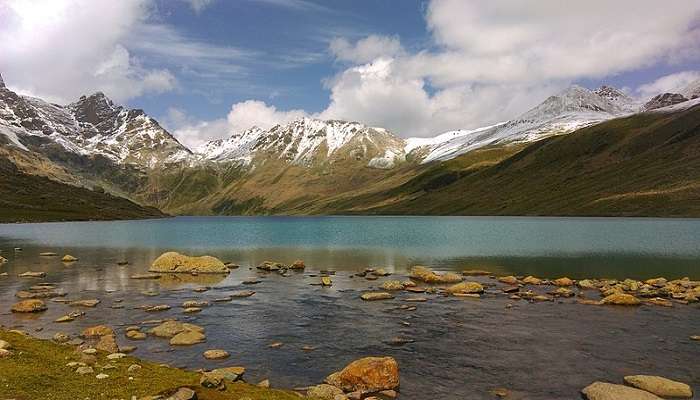
Gangabal Lake is a high-altitude alpine lake on the foothills of Mount Haramukh. All like it for its pristine beauty and spiritual value. This lake is a glacial source of filling and is considered holy in Hindu mythology, the abode of Lord Shiva. The trek to Gangabal is arduous and starts from Naranag. It has views of the most beautiful parts of the Himalayas. Lovely meadows, green forests, and rocky stretches of land are all situated along its length, attracting many adventure seekers. Its crystal-clear waters reflect snow-capped peaks, a feast for the eyes. One camp beside the lake indulges in trout fishing after acquiring the requisite permissions and enjoys the serenity of the mountain atmosphere. The weather conditions are best in summer for any trekking activities.
Location: Ganderbal District, Jammu and Kashmir
Entry Fees: There are no entry fees to be paid, but permits may be required for trekking
Timing: June to September is the best time to visit
Distance from Naranag: 40 km trek
Related Post: Places To Visit In Kashmir
2. Vishansar Lake
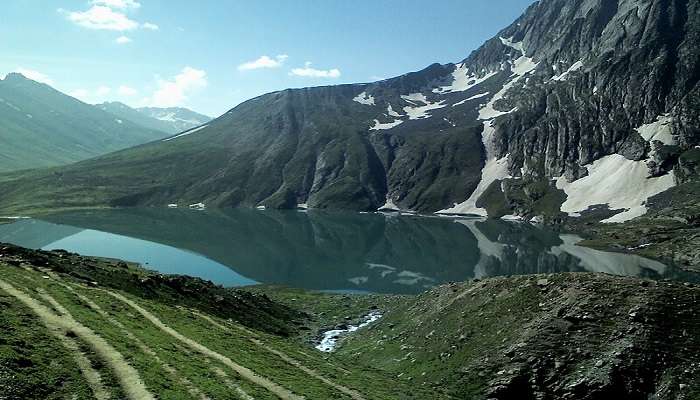
Vishansar Lake is another crown jewel of high-altitude lakes in Kashmir. Its altitude measures 3,710 metres, and it is one of the famous Kashmir Great Lakes Treks. The path to Vishansar from Naranag goes through some of the most unique landscapes in the region, with green meadows, pine forests, and rocky mountain passes. At the end, it is surrounded by snow-capped peaks, providing a serene environment for camping; thus, one can capture beautiful scenery with a camera. The water keeps changing colour from deep blue to turquoise, adding magic to this place. Enough flora and fauna have come up around the lake, comprising some of the rare species of the Himalayas.
Location: Ganderbal District, Jammu and Kashmir
Entry Fees: Nil; though one has to pay for the trekking permit
Timing: June to September
Distance from Naranag: 45 km; it is a part of the Great Lakes Trek.
3. Satsar Lakes
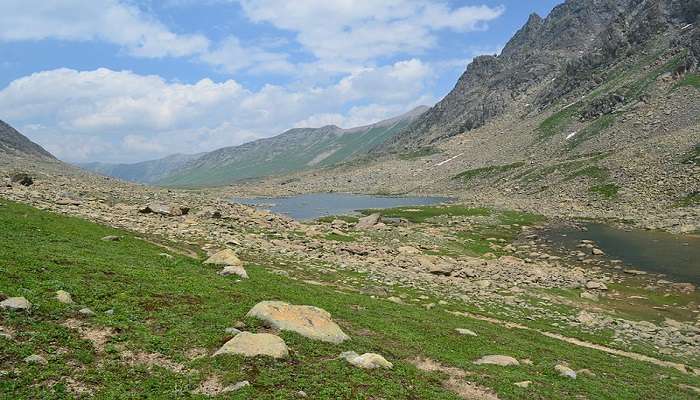
Satsar Lakes, meaning seven interconnected lakes, is unique and challenging for trekking. “Sat” in Kashmiri means seven, and this system has seven lakes. Every lake has a different character and charm: small and more significant ponds. Satsar, from Naranag, is a part of the more famous Kashmir Great Lakes Trek. It takes one through boulder-strewn paths and lush meadows. These lakes surround rugged mountains and offer great camping and stargazing opportunities. Various wildlife—from marmots to the occasional Himalayan brown bear—is found here.
Location: Ganderbal District, Jammu and Kashmir
Entry Fees: No entry fee. Trekking permits may be required
Timing: July to September is the best time to visit
Distance from Naranag: Satsar Lakes is part of the Great Lakes Trek, and it involves 50 km of trek
Related Post: Lakes In Kashmir
4. Tulail Valley
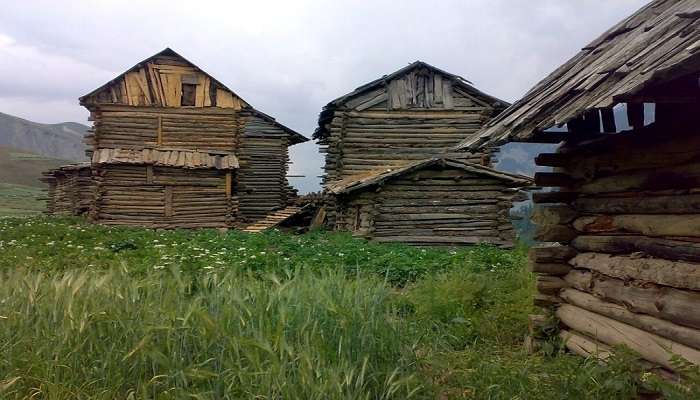
Tulail Valley is an unspoiled and unexplored new paradise in Kashmir’s famous Gurez sector. It lies on the Line of Control and has hardly been touched by modern tourism because it remained virgin and out-of-bounds, retaining its pristine landscapes and traditional ways of life. At Tulail, one comes across purely pristine Dard-Shin culture with its language and distinct customs. Beautiful green meadows, dense forests, and the crystal-clear waters of the Kishenganga River are typical of this valley. Ancient structures and rock carvings give a historical charm to the valley’s beauty.
Location: Bandipora District, Jammu and Kashmir
Entry Fees: No entry fee Permits required for specific areas)
Timing: From May to October
Distance from Naranag: About 80 km via road
5. Harmukh Peak
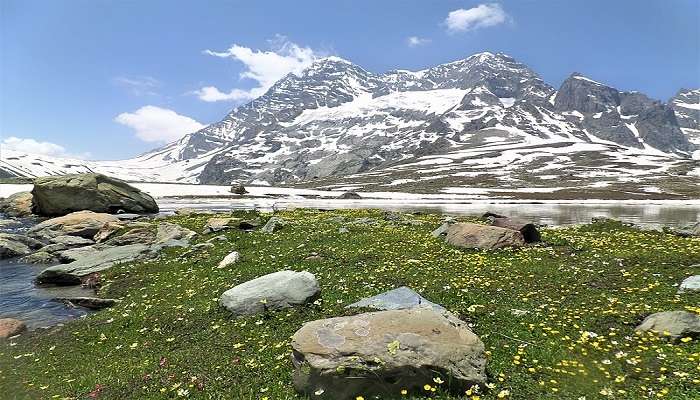
Harmukh Peak lies at an altitude of 5,142 metres and is one of the grand mountains of the Kashmir Valley. The mountain peak is conic or somewhat pyramidal; it is said to be Lord Shiva’s abode in Kashmir Shaivism. It is pretty challenging for professional mountaineers, but the views of the snow-capped Himalayas and alpine lakes are simply incredible. At its fundamental scale, the base camp trek to Harmukh goes from Naranag through thick forests, rocky terrain, and alpine meadows at high altitudes. While very few professional climbers with proper gear attempt the peak, the base camp trek remains in demand among adventure seekers. Harmukh forms part of the Himalayan flora and fauna variety with high biodiversity.
Location: Ganderbal District, Jammu and Kashmir
Entry Fees: Nil; mountaineering permits are required with an applicable fee.
Timing: July to September is the best climbing season
Distance from Naranag: About 35 km trek to base camp
You May Also Like To Read: Summer In Kashmir
From ancient ruins of temples to doorways opening into magically beautiful Himalayan scenery, Naranag is the epitome of a blend of historical and natural importance. This hidden corner of Kashmir can be your chance to rewind the clock amidst the crude and raw beauty of the Himalayas. With an archaeological temple complex and treks to various high-altitude lakes and peaks, Naranag has something in store for a history enthusiast, nature enthusiast, and adventure lover. Explore multiple packages for your trip to Kashmir. With ongoing attempts at preserving this site and responsible tourism, it will soon occupy the place of centric prominence in the tourism landscape of Kashmir.
For our editorial codes of conduct and copyright disclaimer, please click here.
Cover Image Credit: Mehrajmir13 for Wikimedia Commons
Frequently Asked Questions About Narang
What would be the best time to visit Naranag?
The best time to visit Naranag would be from May to September when the weather is fine for trekking and exploring temple ruins.
Is there accommodation available in Naranag?
Naranag's accommodation is fundamental; only a few guest houses and camping options are available. Most visitors stay in the nearby towns like Srinagar and visit on a day trip.
Is there any need to take a guide for the Naranag to Gangabal Lake trek?
Though self-trekking is quite possible, I hired a guide due to safety and specific stretches that may be challenging along the route.
Are there any restrictions to visiting the temple's ruins at Naranag?
Visitors are permitted to access the remains of the temple. However, as it is a heritage site, business people and locals, with the help of authorities, should ensure that this tourist sport remains safe.
What clothing and accessories should one carry for Naranag trekking?
Bring warm, layered clothing, sturdy trekking shoes, rain gear, and essential camping equipment if you spend the night on treks. Always check on the current weather and conditions of treks before your trip.
People Also Read:
Kashmir In July Kashmir In June Kashmir Travel Tips

Unveil the hidden treasures of the globe and turn every travel dream into reality. As a Content Writer, I am passionate enough to craft stories from ancient wonders to modern marvels. My words paint the picture-perfect itinerary for unforgettable experiences. Let my words be your trusted guide to immerse in the diverse culture and discover the beauty of the unknown.











